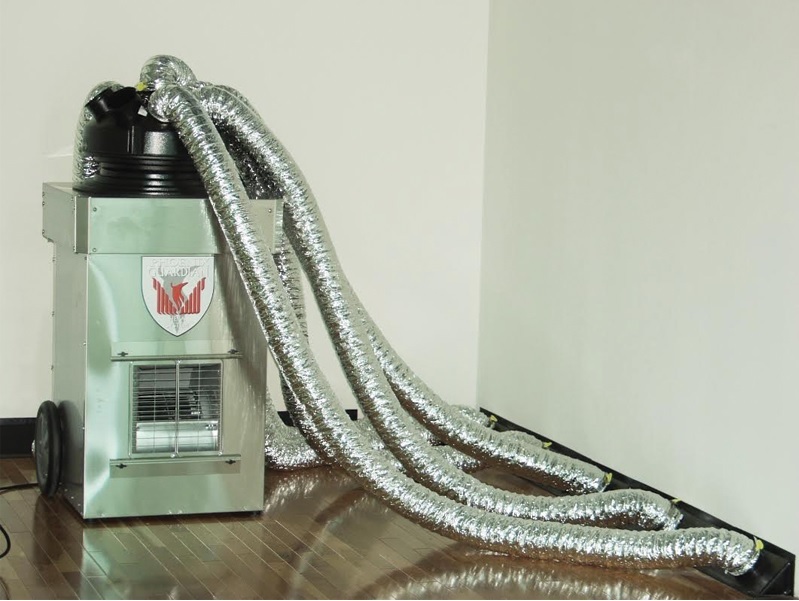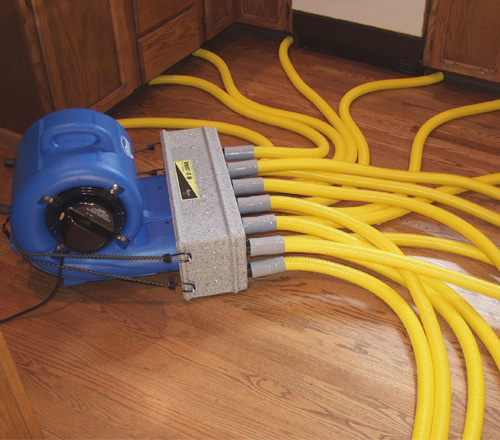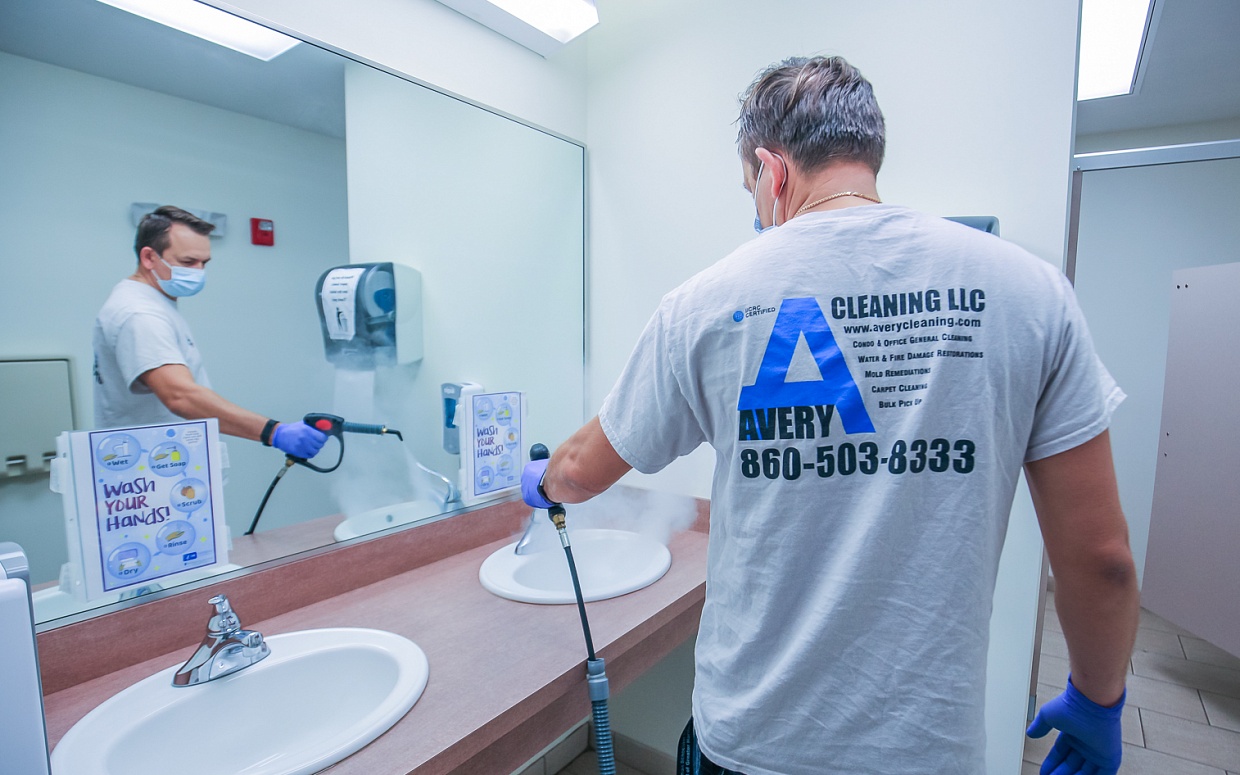From the moment a moisture incident occurs, a mitigation game plan needs to be created. The longer a moisture intrusion goes unchecked, the deeper the moisture penetrates. Natural drying time is relative to how quickly a material absorbs moisture to begin with. Slow-absorbing materials will take longer to dry out. The longer mitigation is delayed, the more time, manpower and cost is required to complete the process.
Proper moisture mitigation based on the type of water that caused the problem can be the key to preventing demolition. There are three classifications of water: clean water, unclean water that may pose health hazards and grossly-contaminated water (example: sewage.)
Avery Cleaning can often bypass demolition when clean water is involved. We use appropriate systems and special equipment to push HOT air inside wall cavities, using either positive or negative pressure. Heat energy warms wet materials, energizing molecules to move faster and exit the wet materials. In all cases, dehumidifier is attached to trap moist air that is released from wet materials.

In other cases like unclean or grossly contaminated water – demolition and proper disposal are a must!
One of the most common questions we’re asked is “Will we have to do demolition to fix this moisture incident?” People envision ripping down walls, removing cabinets, peeling off their favorite wallpaper or worse… for even the most minimal moisture incident. They fear wall cavities riddled with mold or mold growth potential.
We use specialized equipment to accomplish the goal of cavity drying without demolition in some of these cases. This doesn’t mean that every case will be so cut and dry. Demolition is still sometimes necessary.
The first step is using an air mover system: axial or centrifugal. In addition to it, there are specialized units that create even high-pressure airflow, forcing air into or out of wall cavities, other interstitial spaces, under flooring materials or otherwise unreachable areas. These systems are used primarily for drying wet wall, ceiling, and other assemblies including complex flooring systems. They are classified by pressure ranges and how they handle airflow through ducting and attachments. The higher-pressures are necessary to get through small diameter air delivery systems, attachments, and tight air spaces where moisture is often hiding. Attachments can be affixed to these systems for filtering, directing and manipulating air.

Ducting and wall vents can be used to send airflow under subfloors and into wall or ceiling cavities with sleepers and flutes. Pressurization can be positive, negative or both to help the drying process. Sometimes used are panels and mats that are temporarily secured to hardwood flooring to keep negative pressure moving seamlessly in spaces beneath flooring. The higher the pressure and airflow, the faster the moisture is funneled out from beneath these spaces.
Positive-pressure systems run the risk of blowing and spreading contamination. When pulling moist air from contaminated cavities using negative pressure, an in-line HEPA filter is recommended to remove contaminants before recirculating the air back into the room.
No matter how many cases we’ve seen, water damage scenarios are always unique. We may consider removing structural material if appropriate before setting up the drying system. Materials that are beyond repair or restoration can pose a safety hazard and should be removed as soon as practical.
Some examples:
- Damaged-beyond-repair drywall, cabinets, carpet and padding can realistically become too far gone with moisture damage. In most cases carpets shrink when “floated” and cannot be stretched back and even ripped by doing so. There is no point to rescue carpets that are over 10 years old, unless they have sentimental value. Completely taking them out of the environment at the start of the drying process brings down the overall moisture load, reducing the strain on / amount of equipment needed.
- The materials themselves may not be damaged, but their presence can slow down drying important structural materials behind or below them. A few examples are: vinyl wallpaper over wet drywall, sheet vinyl flooring over wet subflooring, or wet carpet and pad over strip wood flooring
- Sagging ceiling drywall should be demolished and removed immediately. It is not restorable and is a major safety hazard due to the potential for unexpected collapse. It can also trap moisture and slow the drying of materials above it.
- All other contaminated materials that pose a safety hazard should also be removed.

